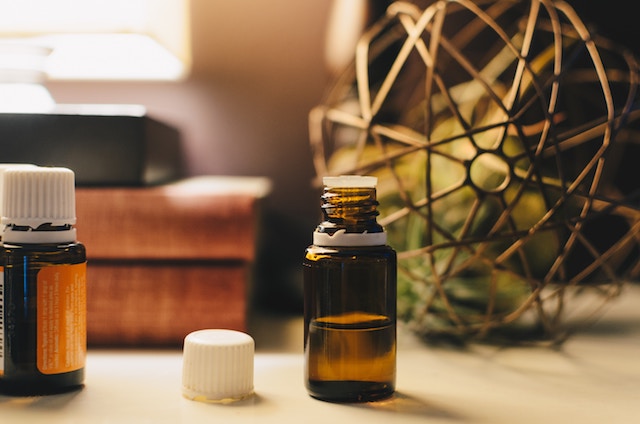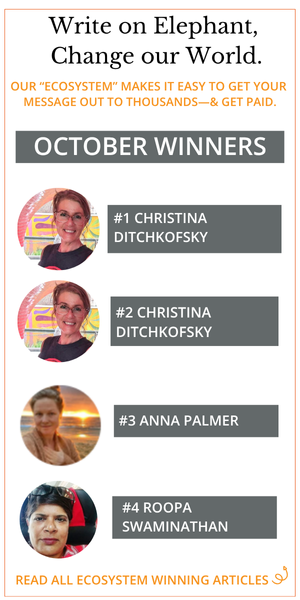
Lavender oil calms our mind and helps us sleep. Sandalwood relaxes us and makes us feel all sensual-like. Rose oil lifts our mood, not to mention our wrinkles. Frankincense relieves anxiety and negative emotions.
These oils and their flowery, fruity, and forest-y counterparts have become staples in spiritual and holistic communities.
And why wouldn’t they be? They’re from the earth. They stick it to Big Pharma. They come in glass bottles, not plastic. They smell seriously tasty.
As with most things, though, there’s a bit more to the story than that.
You can’t have your rosemary-infused cake and eat it too.
On the whole, I’ve never been one for holistic remedies, but that doesn’t mean I don’t indulge my curiosity once in a while.
Do I occasionally treat myself to the dreamiest, silkiest lavender oil bath after a particularly stressful day? Sure do.
Did I go out and buy 100% pure face oil to replace my everyday moisturizer during an especially blemish-prone period of my early 20s? You bet. I even felt a little smug about the lack of chemicals I was putting on my face and the confused-to-mildly-horrified looks I got when I told people I put oil on my skin to make it healthier.
For better or worse, though, I’m a stubborn cynic, and my “belief” in these indulgences never went any further than something I liked the smell of, the feel of, or the resulting dewiness of my skin.
I never believed oils could cure my anxiety (that one is my brain’s doing), the persistent stomach problems I’ve had since I was a child (pretty sure a strict diet of chicken nuggets and bagels is to thank for that), or come anywhere close to having the pharmaceutical competence of cancer-treating drugs (I’ll circle back to that one in a minute).
A few weeks ago, I came across an article in The New Yorker called “How Essential Oils Became the Cure for our Age of Anxiety,” and after the third sentence I grabbed a pen and highlighter and got to work enthusiastically underlining and circling and unnecessarily expressing my agreement in the margins.
To grossly simplify the article, which is worth reading both if you’re a cynic like me or (perhaps even more so) if you’re a firm believer in the power of essential oils, some of the largest companies in the essential oil industry are, at best, pyramid schemes that take advantage of their most active sellers, and, at worst, dangerous and quite literally life-threatening alternative medicine businesses.
But a few sentences in particular caught my eye, and they had nothing to do with the much-debated medicinal uses of essential oils.
Instead, they were about something I’ve rarely heard contested—in fact, it’s precisely what draws many people to oils in the first place: their status as a natural, from-the-earth product that is less harmful to our bodies than mainstream makeup, medicine, and food additives.
According to the article,
“Essential oils, which are made by steam-distilling or cold-pressing plant materials, are incredibly resource-intensive to produce. It takes more than a million rose petals to make an ounce of rose oil.”
And,
“Frankincense […] is derived from the resin of trees that grow only in the Horn of Africa and the Middle East. Anjanette DeCarlo, an environmental scientist who specializes in frankincense, told me, ‘If the demand keeps up without proper controls, we risk causing an ecological crash of a rare and endangered ecosystem.’”
My lavender baths and dewy skin didn’t quite feel like the smug-wrapped treats they had before.
I started to do a little more digging about the environmental impact of essential oils.
I wouldn’t say I found an overwhelming trove of the evidence of their evil, but I found enough to make me rethink using them myself, and question the way they are commonly used and marketed in the spiritual community.
Earth Island Journal echoed the sentiments in The New Yorker about the vast amount of plant needed to create a tiny amount of essential oil: 10,000 pounds of rose petals, 250 pounds of lavender, 6,000 pounds of Melissa plant, 1,500 lemons are needed to make one pound of each essential oil.
Additionally, cedarwood and two kinds of rosewood are on the IUCN Red List of Threatened Species, and sandalwood is on the list as a vulnerable species.
So, we might (rightly) be giving ourselves a pat on the back for avoiding plastic tubes of makeup and dangerous chemicals, but have we stopped to consider the ecological cost of going au naturel?
The problems don’t end there.
We also have to consider where these oils are coming from. As stated in The New Yorker, Frankincense is derived from the Horn of Africa and the Middle East, which means it is then imported for us to use in the rest of the world. Similarly, in 2013, 496 tonnes of lavender oil and 88 tonnes of rosemary oil were imported into the U.S. alone.
That means there is fuel, emissions, storage, and transportation cost to consider as well.
Even the glass vials essential oils come in—a far cry from the horrors of plastic containers, to be sure—are problematic.
According to Earth Island Journal, some states require that any glass containers that previously contained flammable or hazardous materials (essential oils are highly flammable) be thrown in the trash, not recycled. The plastic caps and roller balls that are common for application also restrict the ability for many of these vials to be recycled, and once again they land in the regular trash.
Okay, so maybe I should chill with the oil baths, but how the hell am I supposed to relax, naturally?
Moderation is a lovely little antidote to things that are sort of good but can also be kind of bad. Using essential oils sparingly, with an awareness of their production process and contents, and understanding how to properly and responsibly dispose of them is a good place to start.
Still, I’d say we could all do with less external solutions our stress, our sensuality, our moods, and the smoothness of our skin.
What if we tried meditating, taking the time to understand what brings us pleasure (sensual or otherwise), and practicing maitri instead? Smelly-good and silky smooth things might aid the process, but if we’re touting an enlightened lifestyle, there’s a bit of hypocrisy in choosing to enlist something outside of ourselves and that harms our environment to cure our ailments.
There’s one more quotation I stumbled across, and I think it speaks for itself as one final thing to think about before we grab that next cure-all from the shelf:
“As global citizens, we have not learned how to equitably distribute vital resources like food, and water resources are trending toward a crisis of the future,” Green said. “So there are deep ethical concerns about devoting croplands to essential oils destined for use in candles, bath oils, perfumes or lavish massage and spa purposes.” ~ Mindy Green
Bonus:
Relephant Reads:
A Guide to All-Natural Body Oils.
The right Essential Oils for our Doshas.
Author: Emily Bartran


 Share on bsky
Share on bsky




Read 6 comments and reply